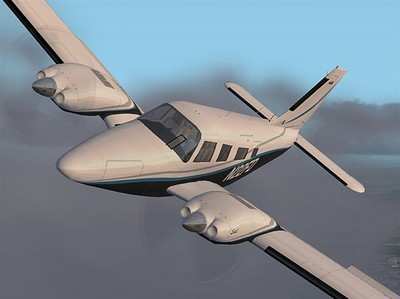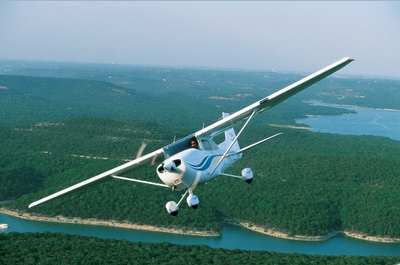Air Traffic Controller Not Culpable for 2018 Mid-Air Collision
The families of four people killed in a midair collision over Florida’s Everglades argued before the Eleventh Circuit on Thursday, 27 April 2023 that a lower court had wrongly ruled the U.S. government was not negligent vis-à-vis the collision.

The plaintiffs contended an air traffic controller's instruction had set the involved aircraft on a collision-course.
Plaintiffs’ attorney Hyram M. Montero set forth during oral arguments in a Miami courtroom that the lower court's judgment in favor of the U.S. federal government ought be reversed insomuch as the air traffic controller under whose auspices one of the involved aircraft had been operating immediately prior the collision had breached protocol by failing to rescind an instruction he’d issued—notwithstanding the fact the aircraft to which he’d issued subject instruction had traveled beyond his sector when an eventual proximity conflict arose.
Counselor Montero asserted: "The primary purpose of the air traffic control system is to prevent a collision between aircraft. They [the pilots party to the midair collision] were dependent on the air traffic controllers to let them know of the traffic advisories and safety alerts of incoming aircraft."
The incident in question occurred in the vicinity of the Miami Executive Airport (TMB) on 17 July 2018. According to FAA records, a single-engine Cessna aircraft flown by student pilot Carlo Scarpati under the operational control of Certified Flight Instructor (CFI) Jorge Sanchez collide in-flight with a twin-engine Piper Seneca then occupied by pilot Nisha Sejwal and Designated Pilot Examiner (DPE) Ralph Knight.
Plaintiffs Perry W. Hodges, Aurora Cecilia Scarpati-Ripalda, Marlenis Sanchez, and Pedro Sanchez sued the U.S. federal government, contending collectively that the Federal Aviation Administration is responsible for the rules of air traffic control services and exercises, therefore, "sole and exclusive control" of all towered airports and any aircraft operating within the controlled airspace of the U.S. National Airspace System (NAS).
The plaintiffs sued separately, but in 2019 their cases were consolidated in the U.S. District Court for the Southern District of Florida.
In May 2022, following a nonjury trial, a District Court judge ruled the plaintiffs had failed to prove their claim under the Federal Tort Claims Act, stating evidence presented during the proceedings had failed to support the defendants' allegation that the midair collision in which their loved ones perished had been occasioned by shabby air traffic control or dereliction of duty on the part of a particular air traffic controller.
Counselor Montero argued that the air traffic controller of interest had discarded the Seneca’s flight’s strip—an antiquated but effective tool by which flights within the NAS are managed.
Extant ATC operation manuals and procedural conventions do not specify when, precisely, an aircraft’s strip should be discarded. Such decisions are left, rightly, to the discretion of air traffic controllers.
Montero stated, also, that the controller, at the time of the collision, continued to track the converging aircraft on radar, and was responsible, therefore, for the Piper Seneca to which he’d issued instructions.
U.S. Circuit Judge Robin S. Rosenbaum declared: "His [the air traffic controller’s] duty is not to look at the radar screen continuously. He looks at them, but that's not his primary duty. His primary duty is to keep the runways clear and keep the traffic coming in and going out from crashing."

In point of fact, the air traffic controller’s primary duty, regardless of whether stationed in an Air Route Traffic Control Center, an Approach/Departure Control facility, or a VFR control tower, is to maintain separation of IFR traffic, provide navigation and obstacle-avoidance assistance to such, and, workload permitting, provide flight-following services—which include traffic advisories—to VFR aircraft.
Defendant’s attorney Guice Slawson III of the U.S. Department of Justice maintained the controller was not aware and had no reason to be aware the Cessna and Piper were in dangerous proximity to each other.
Slawson argued the controller would have been liable for the incident had his conduct constituted a foreseeable hazard to the occupants of the two aircraft—which he argued was not the case, alleging the air traffic controller had not been aware of the inbound Cessna until it made an incomplete transmission to the TMB control tower, albeit only seconds prior to the collision.
"At that point,” Slawson contended, “with extremely limited time and information, he [the air traffic controller] did everything within his power by issuing an alert about the impending collision only two seconds after he heard the inbound Cessna's call." Slawson further remarked the air traffic control's responsibility for the Piper ended once it left his sector, concluding: "The primary purpose of the air traffic control system is to prevent the collisions of aircraft operating in the system. These aircraft simply were not in the system."
 ANN's Daily Aero-Term (05.01.24): Say Altitude
ANN's Daily Aero-Term (05.01.24): Say Altitude ANN's Daily Aero-Linx (05.01.24)
ANN's Daily Aero-Linx (05.01.24) Classic Aero-TV: Korean War Hero Twice Reborn
Classic Aero-TV: Korean War Hero Twice Reborn Airborne 04.29.24: EAA B-25 Rides, Textron 2024, G700 Deliveries
Airborne 04.29.24: EAA B-25 Rides, Textron 2024, G700 Deliveries Airborne Affordable Flyers 05.02.24: Bobby Bailey, SPRG Report Cards, Skydive!
Airborne Affordable Flyers 05.02.24: Bobby Bailey, SPRG Report Cards, Skydive!




